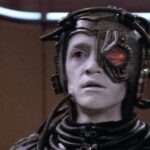Scientists have discovered a way to prevent breast cancer cells from hibernating and then “waking up” years later, which would otherwise cause a relapse.
The results provide promise for novel therapies that can prevent breast cancer from reoccurring years after first therapy.
Eighty percent of breast cancer cases are oestrogen receptor positive (ER+), so this study concentrated on this subtype of the disease.
Because oestrogen is susceptible to ER+ breast cancer, the hormone promotes cell division and growth in these tumors. Treatment often consists of a variety of surgical procedures and therapies, each specifically designed to meet the needs of the patient.
On the other hand, some cancer cells may undergo alterations as a result of the treatment, leading them to “hibernate” as opposed to killing off.
Now, researchers from The Institute of Cancer Research in London have uncovered the mechanism behind the changes, prompting hopes of new treatments that can stop the cancer altogether.
For their study, published in the journal Cancer Discovery, the team looked at the role of an enzyme known as G9a, and found that inhibiting G9a prevented cancer cells from becoming dormant – and also killed the cells that were already hibernating.
Luca Magnani, professor of epigenetic plasticity at the institute, said: ‘After surgery to remove primary oestrogen receptor positive breast cancer, patients are given five to 10 years of hormone therapy, which aims to kill any remaining cancer cells.
‘We know that this doesn’t work for all patients though, as their breast cancer can return years, or even decades later.
‘We wanted to better understand why breast cancer does return so we can hopefully find ways to stop it – so people don’t have to live in fear or face the devastating news of a relapse.
Breast cancer: symptoms to look out for
- A new lump or thickening in your breast or armpit
- A change in the size, shape or feel of your breast
- Skin changes in the breast such as puckering, dimpling, a rash or redness of the skin
- Fluid leaking from the nipple in a woman who isn’t pregnant or breastfeeding
- Changes in the position of the nipple
‘Our research identified a key mechanism used by cancer cells to evade therapy by remaining in a dormant state, hibernating before they “wake up” years later and begin to rapidly divide again.’
He hopes the early findings will lead to research that targets the cells so patients can be sure that their cancer will not return without the need for years of hormone therapy.
Dr Tayyaba Jiwani, science engagement manager at Cancer Research UK which funded the research, said: ‘Breast cancer survival has doubled in the UK over the last 50 years thanks to better detection and screening, but there are still more than 11,000 deaths from this type of cancer every year.
‘Our research has made it increasingly clear that cancer cells can lie dormant in the body for many years before being triggered to reawaken, causing cancer to return.
‘This study uses an innovative approach to analyse the genetics of these dormant cells and gain important insight into the mechanisms leading to dormancy.
‘Although at an early stage, the findings reveal potential new targets for the development of innovative treatments that prevent breast cancer from coming back.’





